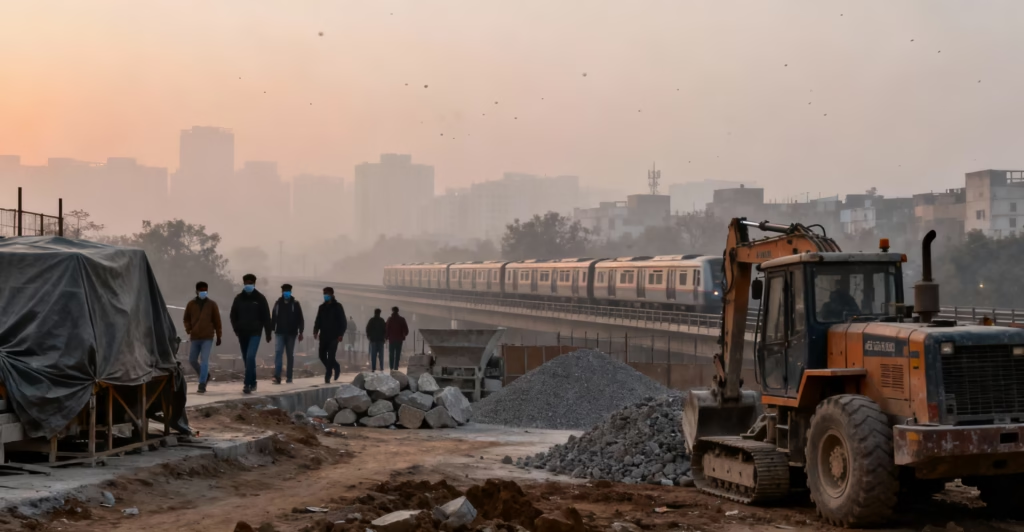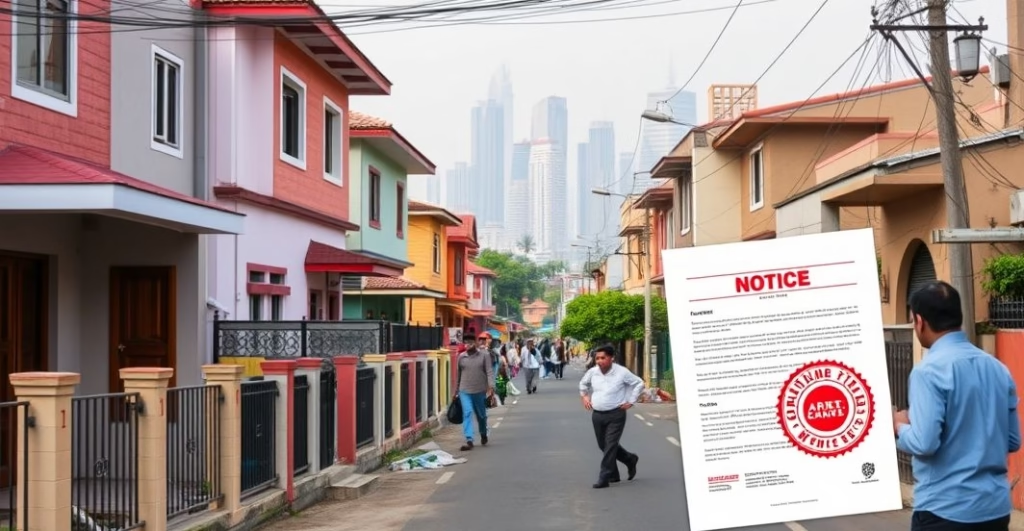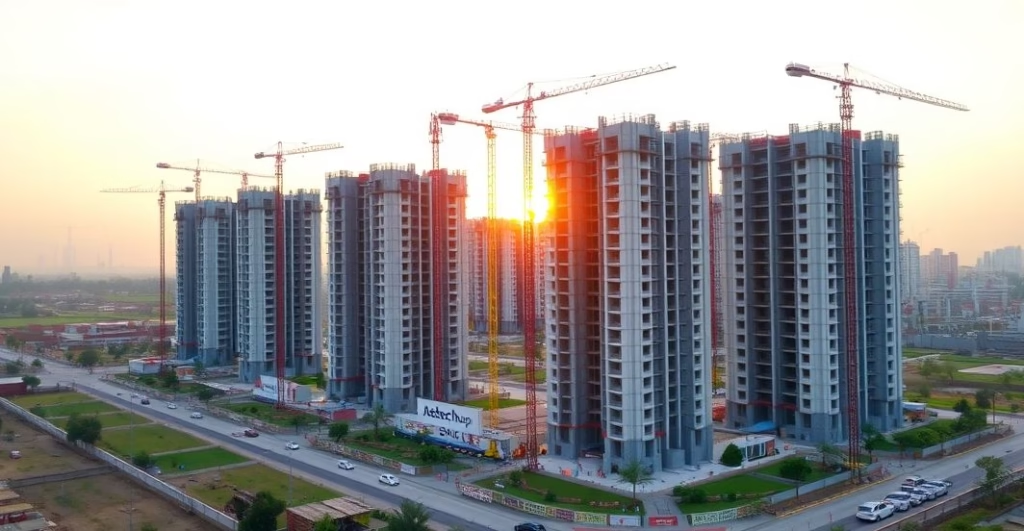Auto-published by Growwh – a smarter way to scale content and marketing. Want to know more? Chat with us.
TL;DR: Stage III GRAP triggered as Delhi-NCR AQI hits 425: construction and stone-crushing halted, certain older petrol/diesel 4-wheelers restricted, and primary classes shift to hybrid. Investors should focus on well-connected, future-ready projects and monitor timelines.
GRAP Stage-III Activated: What Changed Today
The authorities have invoked Stage III of the Graded Response Action Plan (GRAP) across Delhi-NCR after average Air Quality Index (AQI) readings jumped into the severe category — with recorded values as high as 425. The move activates stricter anti-pollution measures beyond Stages I and II to reduce emissions and limit public exposure to hazardous air.
Key Restrictions Under Stage III
- All non-essential construction activity is suspended immediately.
- Stone crushing and mining operations are ordered closed.
- Classes up to Grade 5 must shift to hybrid or online modes wherever possible.
- Use of BS-III petrol and BS-IV diesel 4-wheelers is restricted in Delhi and specified NCR districts (exemptions: persons with disabilities).
Why This Happened: Meteorology Meets Local Sources
Calm winds, a stable lower atmosphere and cold winter temperatures have trapped pollutants close to the ground, rapidly worsening air quality. Local emission sources such as vehicle exhaust, paddy-straw burning in neighbouring states, industrial activity and seasonal firecracker use further compound the situation.
Public Health and Daily-Life Advice
Residents should reduce time spent outdoors, avoid strenuous outdoor exercise, and use N95/FFP2 masks if venturing out. Indoor air quality can be improved using air purifiers and by minimizing indoor emissions (no smoking, reduced incense/candles). Parents should check school directives as many institutions will move to hybrid schedules for younger children under Stage III.
What This Means for Real Estate and Construction
Immediate suspension of non-essential construction and the closure of stone crushers will temporarily slow site activity across Delhi-NCR. Short-term delays can affect completion timelines and handovers. For prospective buyers and investors, demand patterns may shift towards projects with better connectivity, reduced commute exposure and superior indoor air management systems.
Infrastructure upgrades, such as improved metro connectivity, often increase the appeal of well-served locations during pollution episodes — for a deeper look at how transit expansion is reshaping premium neighborhoods, read about Delhi Metro expansion and luxury property hotspots in the NCR.
If you are tracking specific developments in Noida, projects with green planning and amenities that mitigate pollution impacts can offer resilience. An example to review is L&T Green Reserve, Noida (Sec-128), which highlights design features increasingly valued by buyers during high-pollution periods.
Investor Takeaways: Short-Term Shock vs Long-Term Strategy
While GRAP restrictions introduce operational slowdowns, they also accelerate buyer preference for well-located, future-ready developments. Investors should recalibrate timelines, prioritize projects with strong indoor environmental quality and connectivity, and consider broader macro trends. For guidance on positioning property portfolios for the next few years, see Future-Proof Your Wealth: Indian Real Estate in 2026.
GRAP Stages — Quick Reference
The GRAP system categorizes air quality for response planning:
- Stage I — Poor (AQI 201–300)
- Stage II — Very Poor (AQI 301–400)
- Stage III — Severe (AQI 401–450)
- Stage IV — Severe Plus (AQI >450)
How Residents Can Monitor and Prepare
Keep an eye on official AQI updates and advisories. Employers and schools should have contingency plans for hybrid work and learning during prolonged pollution episodes. Homeowners can invest in certified air purifiers, check HVAC filtration efficiency, and support community measures to reduce local emissions.
Short-term disruptions are inconvenient, but they also highlight the long-term value of sustainable urban planning: resilient buildings, better public transit and stricter emission controls will ultimately protect public health and strengthen property values.
This article was auto-generated as part of a smart content campaign powered by Growwh.com. Curious how we do it? Chat with us to learn more about our content automation systems.


